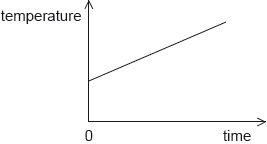| Date | November 2017 | Marks available | 1 | Reference code | 17N.3.SL.TZ0.1 |
| Level | Standard level | Paper | Paper 3 | Time zone | 0 - no time zone |
| Command term | State | Question number | 1 | Adapted from | N/A |
Question
In an experiment, data were collected on the variation of specific heat capacity of water with temperature. The graph of the plotted data is shown.
The uncertainty in the values for specific heat capacity is 5%.
Water of mass (100 ± 2) g is heated from (75.0 ± 0.5) °C to (85.0 ± 0.5) °C.
Draw the line of best-fit for the data.
Determine the gradient of the line at a temperature of 80 °C.
State the unit for the quantity represented by the gradient in your answer to (b)(i).
Calculate the energy required to raise the temperature of the water from 75 °C to 85 °C.
Using an appropriate error calculation, justify the number of significant figures that should be used for your answer to (c)(i).
Markscheme
single smooth curve passing through all data points
Do not accept straight lines joining the dots
Curve must touch some part of every x
tangent drawn at 80 °C
gradient values separated by minimum of 20 °C
9.0 × 10–4 «kJ kg–1 K–2»
Do not accept tangent unless “ruler” straight.
Tangent line must be touching the curve drawn for MP1 to be awarded.
Accept values between 7.0 × 10–4 and 10 × 10–4.
Accept working in J, giving 0.7 to 1.0
kJ kg−1 K−2
Accept J instead of kJ
Accept °C–2 instead of K−2
Accept °C–1 K–1 instead of K−2
Accept C for °C
«0.1 x 4.198 x 10 =» 4.198 «kJ» or 4198 «J»
Accept values between 4.19 and 4.21
percentage uncertainty in ΔT = 10%
«2% + 5% + 10%» = 17%
absolute uncertainty «0.17 × 4.198 =» 0.7 «kJ» therefore 2 sig figs
OR
absolute uncertainty to more than 1 sig fig and consistent final answer
Allow fractional uncertainties in MP1 and MP2
Watch for ECF from (c)(i)
Watch for ECF from MP1
Watch for ECF from MP2
Do not accept an answer without justification


